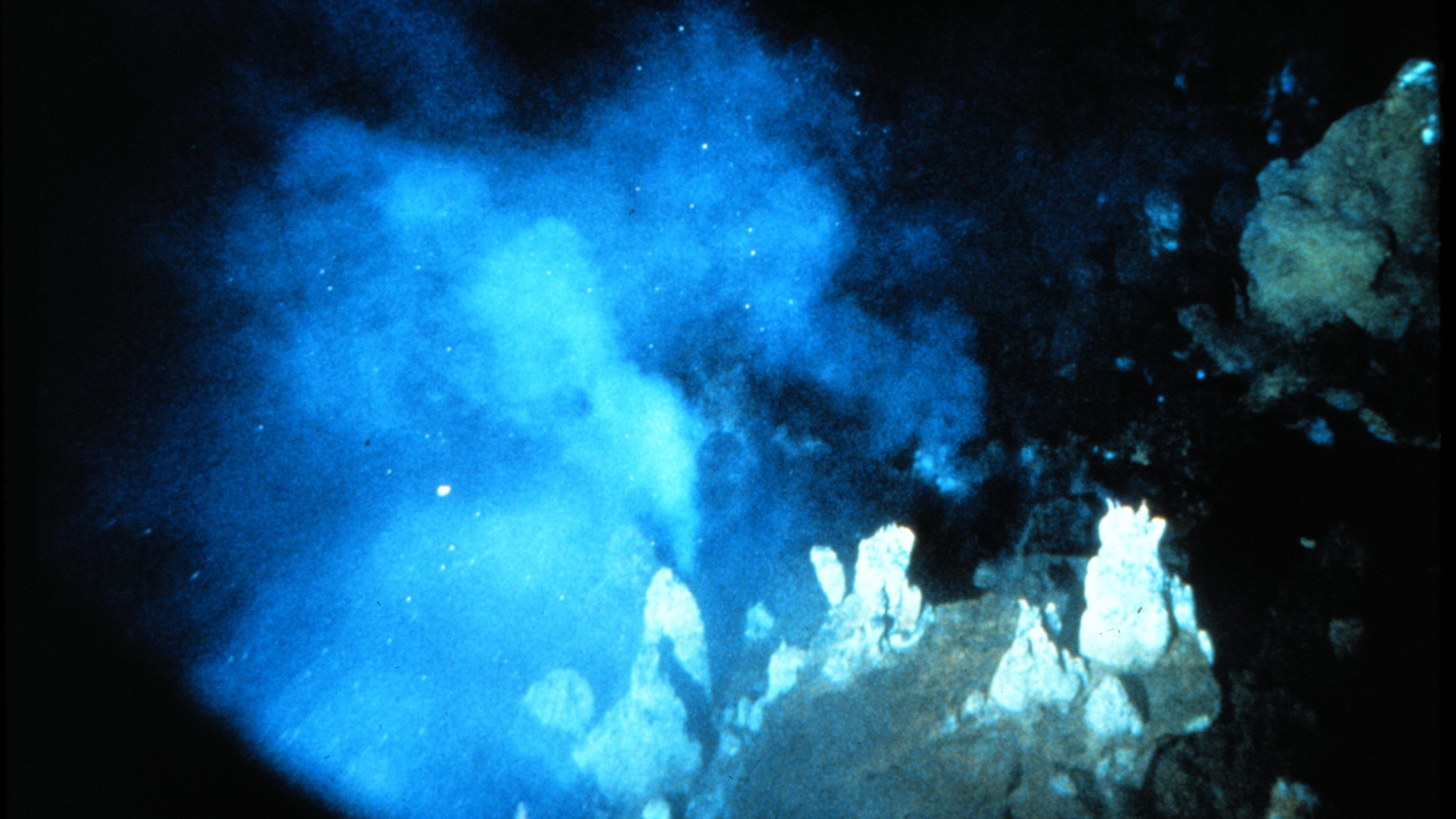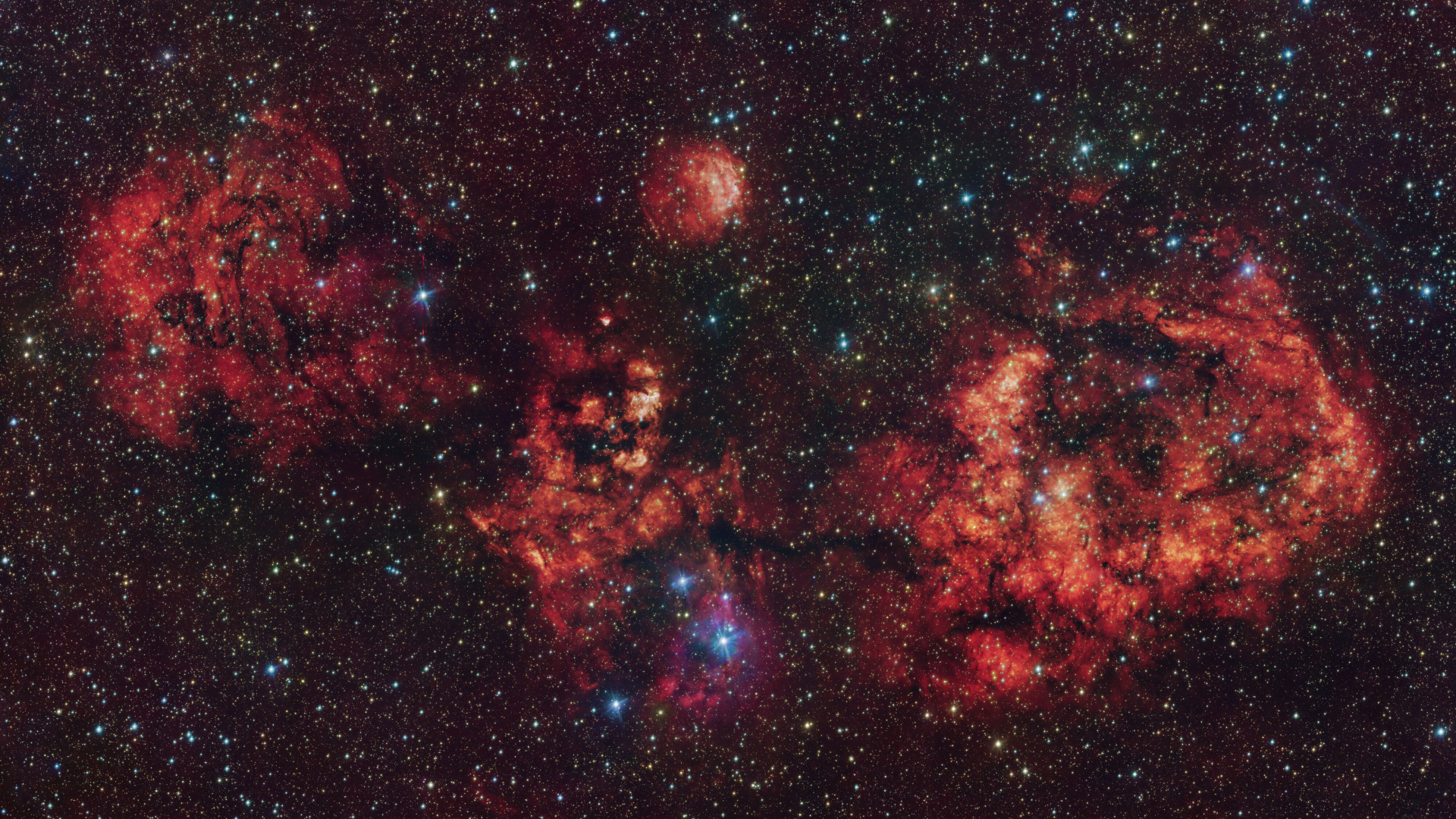Surprise finding at Arctic vent site could help in the search for extraterrestrial life

New research shows that a remote place on Earth has submarine activity akin to that on Saturn's icy moon Enceladus. The finding offers a new opportunity that can help scientists prepare for future space missions that will explore the possibility of life on worlds with subsurface oceans.
An international team of researchers discovered the hydrothermal vent site, called Aurora, in the Arctic in 2014 and revisited it in 2019. Locked roughly 2.5 miles (4 kilometers) under permanent ice cover, Aurora is among the deepest hydrothermal fields on Earth. So, it is not surprising that researchers found it to be a natural, pristine laboratory to study the area's geology and its ability to host hydrothermal vents for long periods of time — an important aspect for life to begin in the depths of ice-trapped oceans.
"The single biggest part of what we may have discovered is a vent site beneath an ice-covered ocean that is also a great place to study organic synthesis relevant to the origin of life and the search for life beyond Earth," Chris German, a senior scientist at the Woods Hole Oceanographic Institution and the paper's lead author, said in a statement.
Related: Alien-life hunters are eyeing icy ocean moons Europa and Enceladus
Aurora is a seamount that sits on top of the Gakkel Ridge, which forms a divergent tectonic plate boundary. This ridge, between Greenland and Siberia, is spreading at an extremely slow rate of just half an inch (a centimeter) per year.
As the plates widen, seawater percolates through the cracks in Earth's crust, where the underlying hot magma heats it to temperatures as high as 750 degrees Fahrenheit (400 degrees Celsius). The heat triggers chemical reactions that remove oxygen and other chemicals from the water, which then shoots back up into the ocean as a plume. This process is called hydrothermal venting.
Scientists think that a similar process plays out on certain icy moons, particularly Saturn's moon Enceladus. NASA's Cassini mission, which explored the system from 2004 to 2017, spotted plumes of water spurting out of the icy crust of the moon's southern hemisphere.
Breaking space news, the latest updates on rocket launches, skywatching events and more!
At Aurora, studying such plumes provides insights into the makeup of Earth's crust, mechanisms that supply minerals to the seafloor and how life begins and survives in such extreme environments. Previous research indicated ultra-slow spreading ridges like Gakkel are not hot enough to maintain prolonged hydrothermal venting. Thus, scientists thought these vents were unlikely places to find life.
"This is a class of vent sites that previously had been dismissed as unable to sustain the growth of large hydrothermal mineral deposits," German said in the statement. "Until now, scientists assumed that such small volcanic systems could not sustain hydrothermal circulation for long enough to grow such large mineral deposits."
However, the team found that the Aurora hydrothermal field contains high levels of gold, copper and methane. This last chemical is a particularly exciting find because Cassini detected methane in the plume from Enceladus, potentially hinting at similar deep-sea hydrothermal vents.
At Aurora, German's team used a high-resolution sonar instrument and cameras pointed down to capture images and live video feeds of the vent site. Among other features, scientists spotted formations called stalagmite-like hydrothermal chimneys rising into the waters at Aurora. The pale "blobs" on the tips of a few of them mark microbial life — the same kind of life that could exist deep in the ocean of Enceladus.
To better understand subsurface processes at Aurora, the team also collected precious data about the plume itself. Those results showed that the plume matched those found at other vent sites located on slowly spreading ridges rich in what geologists call ultramafic rocks, according to the researchers. Ultramafic rocks form in Earth's mantle and are similar in composition to meteorites.
Much like the Aurora field in the Arctic, seafloor vents on Enceladus are also found in ultramafic rocks, and scientists think that the vents could play an important role in flushing minerals from the moon's core into its subsurface ocean — minerals that are crucial for life.
Life around hydrothermal vents
Despite the scalding temperatures, regions around hydrothermal vents are thought to be one of the places where early microbial life on Earth materialized. Biologists have spotted organisms such as yeti crabs, giant tubeworms and deep-sea mussels around hydrothermal vents in the East Pacific Ocean.
How do they survive? Too deep to harvest any sunlight, these organisms cannot rely on photosynthesis. Instead, they use chemicals emerging from hydrothermal vents as their energy source. Through a process called chemosynthesis, they run off hydrogen sulfides, carbon dioxide and other chemicals emitted by the vent.
"We continue to be surprised by how diverse and wonderful the seafloor is," German said. "Every time we go out and explore, we get surprised because we do not just find more of the same. Rather, we continue to find completely new things, different from everything we have seen before."
This research adds to the growing list of reasons why ocean worlds like Enceladus are some of the most exciting places to search for life beyond Earth.
The research is described in a paper published Oct. 31 in the journal Nature Communications.
Follow Sharmila Kuthunur on Twitter @Sharmilakg. Follow us on Twitter @Spacedotcom and on Facebook.
Join our Space Forums to keep talking space on the latest missions, night sky and more! And if you have a news tip, correction or comment, let us know at: community@space.com.

Sharmila Kuthunur is an independent space journalist based in Bengaluru, India. Her work has also appeared in Scientific American, Science, Astronomy and Live Science, among other publications. She holds a master's degree in journalism from Northeastern University in Boston.

